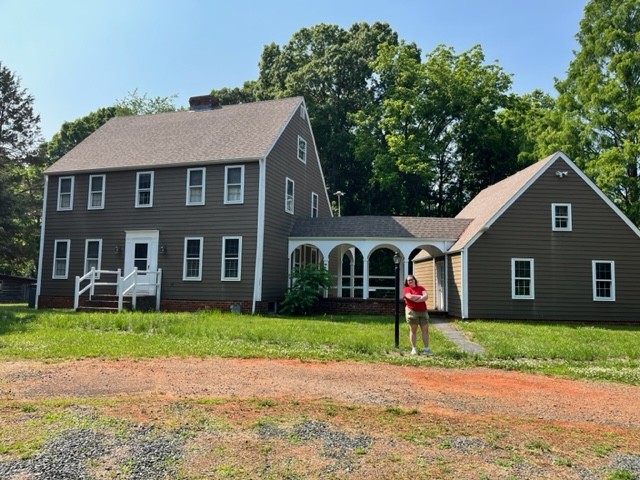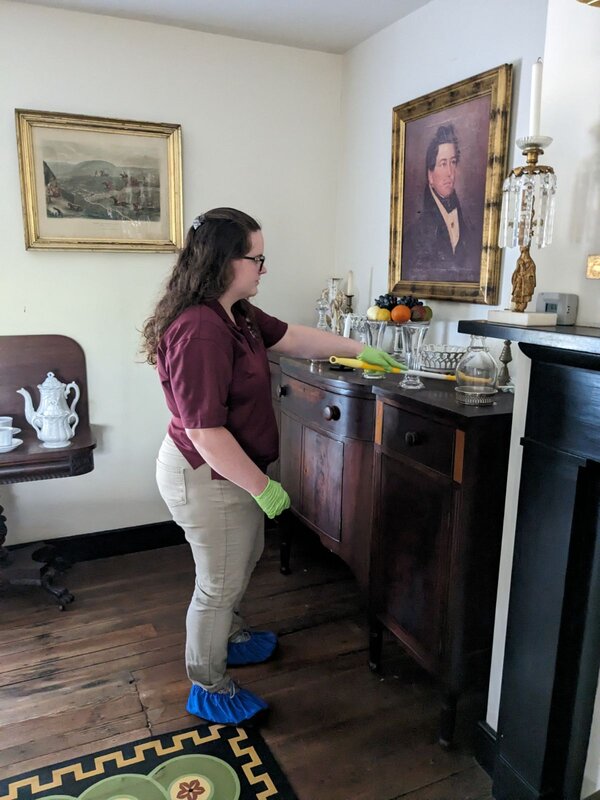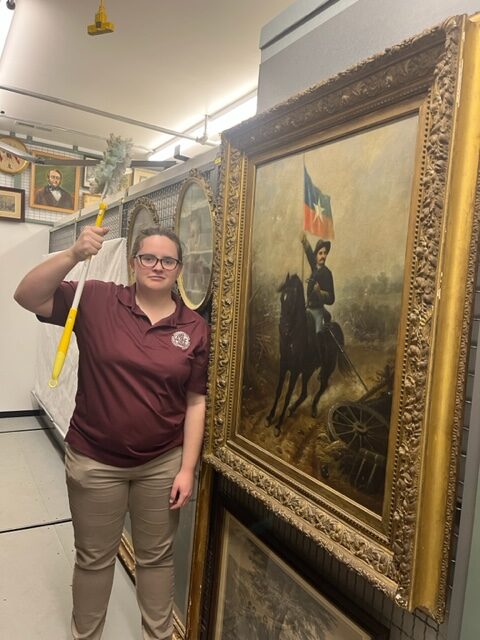Appomattox Court House
Written By: Berit Doolittle
Hi-diddley-ho, “Acerinos!” My name is Berit and I’m serving ACE as the museum services assistant at the Appomattox Court House National Historical Park. I’m currently living in very rural central Virginia; being from Houston, the fourth largest city in the United States, it has been a very interesting adjustment, but nothing too difficult for me to handle. I get to live on the grounds of the national park in this former privately owned house that I share with three other colleagues whose are conducting their service through their respective universities. Our living space is called the “Moon House,” named after the people who used to live here, but my colleagues and I call it the “Murder House” because it’s old, creaky, isolated in a heavily wooded region, and therefore can get really spooky at night. Don’t worry, no one was ever murdered here; we just call it that for fun!

Me in front of the “Murder House,” not yet aware of the creepiness the interior beholds.
My supervisor is Ann and she really puts the “super” in supervisor because she is really cool! She has served in the National Park Service for many years at a variety of neat parks all over the country! Ann is a very affable person whose smile immediately puts me in a good mood when I’m tired or in a lousy mood. Being on the spectrum, my brain is wired a little differently and she has been very understanding and accommodating to my quirks without treating me differently from the rest of the CRM crew. Thanks to her being an incredible supervisor, I have found the work environment here at APCO to be very positive and enjoyable. When I started my service at APCO, Ann had to go out of town on a work trip to Georgia to help the Jimmy Carter National Historical Park reevaluate and update their collections policies, leaving me alone at my job for two whole work weeks on my own. It was slightly nerve-racking at first just because it was a new job, but thanks to my previous experience in museum environments, I felt very confident about the projects I was assigned and was even able to efficiently finish all of them before my supervisor returned. The projects I was given during this period included integrated pest management, environmental monitoring, housekeeping, and annual inventory.

Carefully dusting in one of the historic buildings, wearing nitrile gloves and booties to protect the historic textile pieces on the floors.
Integrated Pest Management (IPM) is where we set up and replace these sticky bug traps every month where we then count and identify each type of bug we catch. Environmental monitoring is another monthly routine conducted to make sure the collections facilities and historic buildings aren’t facing too much light on the interiors because light can cause severe damage to artifacts and museum objects. In each room of every park building, we use a device called a PEN2 to record the levels of both artificial and UV light exposure. Annual inventory takes place once a year and for that, random accession numbers will be placed on a long list of objects that the CRM staff is expected to go find in the storage facilities to make sure everything is in the right spot it needs to be. Housekeeping takes place once a week and involves carefully but thoroughly dusting and vacuuming floors and shelf surfaces in each historic building and curatorial facility. It’s not as fun as most museum work is, but it’s still very important and sometimes I’ll try to find additional ways to make it fun.

Trying to make routine housekeeping “more fun!”